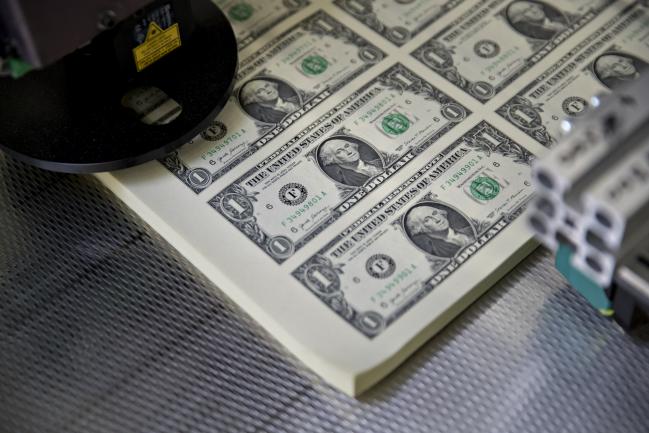(Bloomberg) -- Here’s one sign that investors remain hostile to the dollar: Buyers of U.S.-listed funds are rushing into European and Japanese stocks without currency protection.
Money managers have pulled $2.1 billion from the WisdomTree Japan Hedged Equity fund this year, which is nearly a third of its total assets, data compiled by Bloomberg show. The exchange-traded fund, which buys stocks listed in Tokyo and shields them against fluctuations in the yen, has seen its shares outstanding plunge 5 percent this month to the lowest level since 2013.
It’s the same story for funds that protect against foreign exchange fluctuations relative to the euro. The $6.6 billion WisdomTree Europe Hedged Equity Fund has bled assets for the past 17 weeks, with shares outstanding tumbling to the lowest level since 2015.
The withdrawals underscore the negative sentiment toward the dollar among currency traders. As the outlook for the global economy brightens and political drama in the U.S. further weakens the greenback, investors have no issue snapping up stocks in Japan and Europe without paying for protection against shifts in the U.S. currency.
“The flow picture has turned,” George Saravelos, global co-head of foreign-exchange research at Deutsche Bank AG (DE:DBKGn) in London, wrote in a note this week. “FX-unhedged equity inflows into Japan are beginning, with parallels to the trend in Europe.”
U.S. holdings of European stocks appear relatively stable despite the global equity rout, an indication that the dollar’s losing streak against the common currency will continue this year, according to Deutsche Bank AG. At the same time, foreigners are rotating their holdings from currency-hedged equity funds to the unhedged variety to gain exposure to the rising euro.
The iShares Currency Hedged MSCI Japan ETF has dropped around 3.9 percent this year, compared to a 1.5 percent gain for the unhedged version. The iShares Eurozone hedged ETF, meanwhile, has slumped roughly 0.9 percent versus a 1.5 percent gain for the Europe ETF without currency protection.
(Updates returns in seventh paragraph.)
